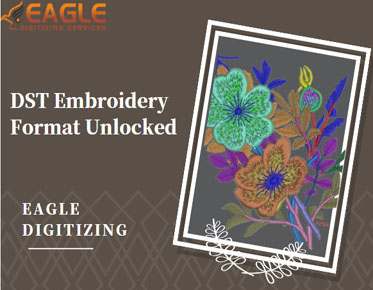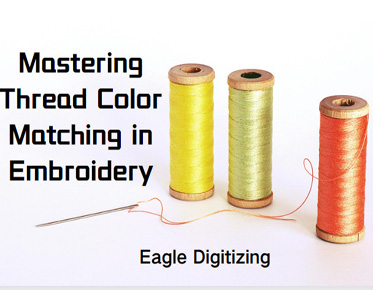Unlocking DST Embroidery Format: Understanding the Industry Standard
Step into the enchanting world of embroidery, where the DST format reigns supreme as the pinnacle of industry standards. With its unmatched precision and versatility, DST unlocks a realm of boundless creativity and meticulous craftsmanship. Explore the intricate artistry woven into every stitch, as we delve into the unparalleled features, advantages, and benefits of this timeless embroidery format. Join us on a journey where innovation meets tradition, and discover why DST continues to be the preferred choice for embroiderers and designers worldwide. Get ready to be inspired and captivated by the magic of DST embroidery excellence.
The Significance of Embroidery
File Formats
Embroidery file formats are the backbone of the digital embroidery industry, serving as the blueprint for translating intricate digital designs into tangible stitched creations. These formats dictate how embroidery machines interpret and execute stitching instructions, making them essential for achieving accurate and high-quality embroidery results.
Overview of DST format
Among the plethora of embroidery file formats available, DST stands out as a cornerstone of the industry. Developed by Tajima, a leading manufacturer of embroidery machines, the DST format has become synonymous with precision, reliability, and universal compatibility. Its widespread adoption and acceptance make it a go-to choice for both commercial embroiderers and hobbyists alike.
Understanding the DST Embroidery Format
Definition
and background
The DST embroidery format, which stands for "Data Stitch Tajima," is a binary file format specifically designed for embroidery machines. It contains encoded instructions that dictate the sequence of stitches, thread colors, and other design elements necessary for accurately reproducing digital designs onto fabric. The format's roots can be traced back to Tajima's pioneering efforts in computerized embroidery technology, dating back to the early days of digital stitching.
Features
and characteristics
DST files are characterized by their efficiency, simplicity, and precision. Unlike some other embroidery formats, DST files contain straightforward instructions that embroidery machines can easily interpret and execute. This simplicity ensures minimal errors and optimal stitching results. Furthermore, DST files are compatible with a wide range of embroidery machines from various manufacturers, making them a versatile and industry-standard choice.
History of DST Format
Origins
and development
The history of the DST format is closely intertwined with the evolution of computerized embroidery technology. Tajima's pioneering efforts in developing digital embroidery machines paved the way for the creation of the DST format. Over the years, the format has undergone continuous refinement and improvement to keep pace with advancements in technology and the evolving needs of the embroidery industry.
Evolution
and adoption in the industry
Since its inception, the DST format has seen widespread adoption and acceptance across the embroidery industry. Its reliability, compatibility, and ease of use have made it the format of choice for commercial embroiderers, garment manufacturers, and embroidery enthusiasts worldwide. Today, DST files are the standard currency of the digital embroidery world, facilitating seamless communication between designers, digitizers, and embroidery machines.
Advantages of DST Format
Compatibility
with embroidery machines
One of the key advantages of the DST format is its universal compatibility with embroidery machines from different manufacturers. Whether it's a single-head home embroidery machine or a multi-head industrial machine, DST files can be seamlessly loaded and stitched without compatibility issues.
Precision
and accuracy in stitching
DST files encode precise instructions for each stitch, resulting in accurate and consistent stitching on fabric. This level of precision is essential for achieving high-quality embroidery results, especially in commercial settings where consistency is paramount.
Applications of DST Format
Commercial
embroidery
DST format is the go-to choice for commercial embroidery applications, where efficiency, reliability, and quality are paramount. From corporate logos and branding to intricate designs and patterns, DST files are the backbone of the commercial embroidery industry.
Customization
and personalization
In addition to commercial applications, DST format is also used for customization and personalization in the embroidery market. Whether it's adding monograms to garments, creating custom patches, or stitching personalized gifts, DST files enable embroiderers to bring digital designs to life with precision and accuracy.
DST Format vs. Other Embroidery Formats
Comparison
with popular formats
While the DST format is widely regarded as the industry standard, there are other embroidery formats available, each with its unique features and characteristics. Formats such as PES, EXP, and XXX offer compatibility with specific embroidery machines and software, catering to different needs and preferences in the industry.
Unique
features and benefits
What sets the DST format apart from other embroidery formats is its universal compatibility, precision, and reliability. While other formats may offer additional editing capabilities or specialized features, DST remains the preferred choice for many embroiderers and manufacturers due to its proven track record and widespread acceptance.
Creating DST Files
Conversion
process
Creating DST files involves converting digital designs into the DST format using specialized embroidery software. This process typically requires importing the design, adjusting settings such as stitch density and color, and exporting the file in DST format for use with embroidery machines.
Software
options and tools
There are several software options available for creating DST files, ranging from basic design software to advanced embroidery digitizing programs. Popular software options include Wilcom Embroidery Studio, Tajima DG/ML by Pulse, and Hatch Embroidery, each offering a range of features and tools for creating and editing embroidery designs.
Future Trends in DST Format
Innovations
and advancements
As technology continues to evolve, we can expect to see further innovations and advancements in the DST format. This may include improvements in compatibility, file optimization, and integration with emerging technologies such as artificial intelligence and cloud-based embroidery solutions.
Emerging
technologies
The future of the DST format lies in its ability to adapt to emerging technologies and trends in the embroidery industry. From automated digitizing processes to real-time monitoring and control of embroidery machines, the possibilities for innovation are endless, ensuring that DST remains at the forefront of digital embroidery technology.
Conclusion
In conclusion, the DSTembroidery format plays a vital role in the digital embroidery industry, serving as the industry standard for creating precise and accurate stitched designs. Its compatibility, reliability, and widespread adoption make it the preferred choice for commercial and personal embroidery applications worldwide.
As technology continues to advance, the DST
format will undoubtedly continue to evolve, adapting to the changing needs and
demands of the embroidery industry. Whether it's
creating custom designs for commercial production or adding personal touches to
individual projects, the DST format remains a cornerstone of modern embroidery
practice.



